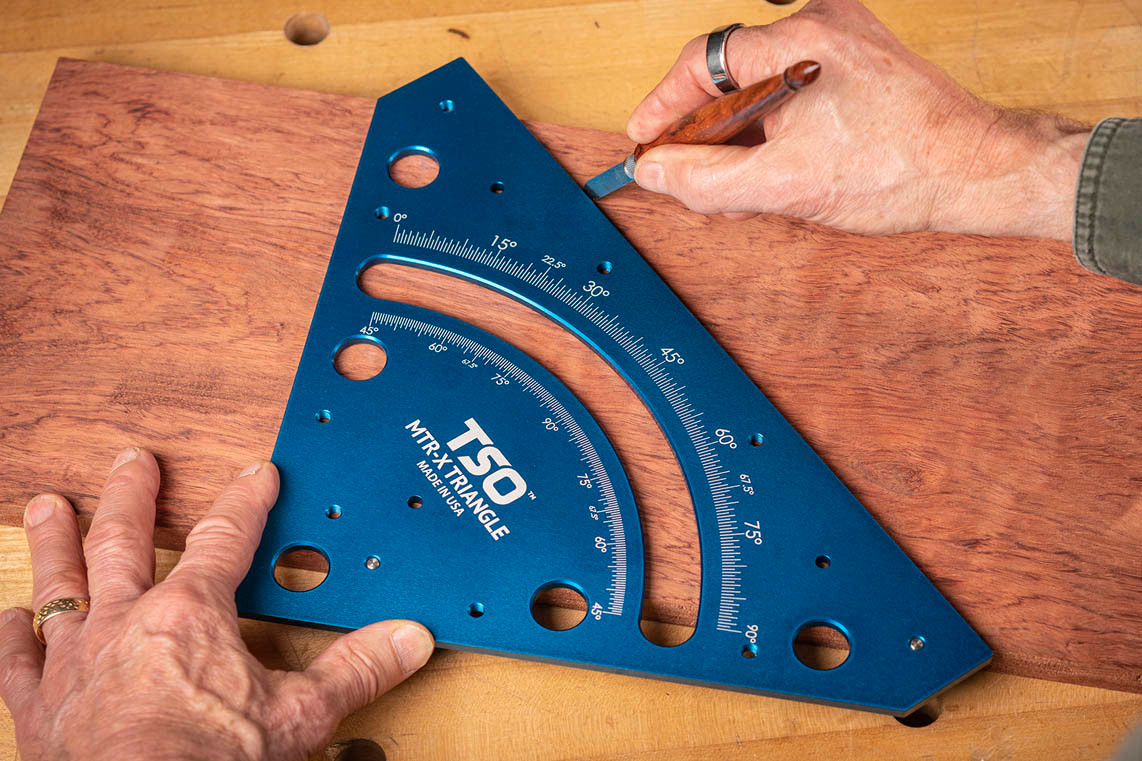Top Precision Measuring Tools for Woodworking
When it comes to woodworking, having the right tools in hand makes you more efficient and helps you achieve better results. Measuring tools play a key part in most phases of a woodworking project. Let’s explore three precision measuring tools for woodworking that every new woodworker should consider adding to their arsenal.
Combination Square
The combination square is versatile. A combination square consists of a ruler and a square head, which you can fix to different lengths along the ruler. It allows you to measure and mark straight lines accurately and repeatably, while the square head enables you to check and create precise right angles.
The opposite face of the combination square is at an angle, allowing you to quickly mark 45 degrees for mitered cuts. Many combination squares come in a kit with a center head, making it easy to find the center of circular workpieces. Combination squares vary in price and quality, with more expensive offerings usually featuring better lock bolts, hardened steel, and a cast iron head.
Precision Triangle
Simple yet effective, precision woodworking triangles have played a part in woodworking for more than 9,500 years. And for good reason: they're one of the most versatile and handy metrology tools in any workshop. A precision triangle can help you accurately scribe perfect 90 and 45 degree angles on your workpiece, but that's just the start. Triangles can also be invaluable during machine setup or calibration, ensuring a jointer fence is aligned at a perfect 90 degree angle to the cutterhead. Likewise, triangles are a great way to ensure your miter saw or radial arm saw is setup for a perfect 90 degree cross-cut.
Some precision triangles are even designed to work with today's modern tools, such as track saws and 20x96mm worktops like the Festool MFT/3 Multifunction Table. For example, the MTR-18 Precision Triangle can be attached directly to a track saw guide rail to enable rapid and extremely accurate 90 and 45 degree angle cuts on panels.
Digital Calipers
It’s possible to get by without digital calipers for many a woodworking task, but the milling process is where this tool shines. It’s indispensable for measuring the thickness and width of workpieces and the depth of counterbores to an incredible level of accuracy.
Digital calipers provide instant and precise measurements in metric and imperial units; some even have additional features such as data hold and zeroing capabilities.
The best part? While you can spend a small fortune on digital calipers, many lower-cost options are suitable for general woodworking tasks.
Marking Gauge
Even the best scale can’t match the repeatable accuracy you get with a physical reference, which is why the marking gauge is among the top precision measuring tools for woodworking. It consists of a rod with a marking pin or cutter at the end. This marking end is adjustable, allowing you to set the desired measurement and score a line along the wood. Marking gauges are particularly useful for tasks such as marking out mortises, tenons, and other joinery cuts.
Expanding your repertoire of measuring tools as a new woodworker will significantly improve the precision and accuracy of your projects. With essential woodworking equipment, you can tackle a wide range of projects with confidence and precision.
Recent Posts
-
Workshop Dust Collection: Smarter Setups for Safer Shops
Wood dust is more than just a nuisance—it’s a real hazard. While sweeping up chips might …12th May 2025 -
Mastering Router Bit Selection: Practical Applications & Performance Factors
Few tools offer the flexibility and capability of a router. From joinery and edge profiling to templ …12th May 2025 -
Building the Ultimate Portable Workbench: A Versatile Solution for Any Project
Limited workspace shouldn't limit your woodworking capabilities. Whether you're navigating a sm …3rd Apr 2025




